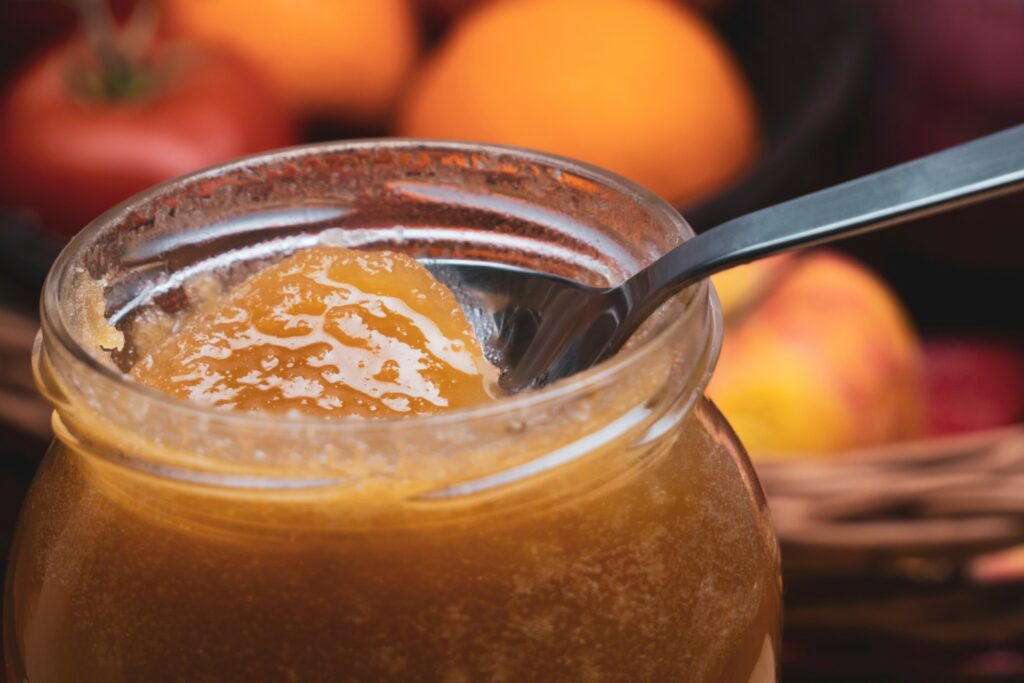What’s The Big Deal About Crystallized Honey?

Also known as “crunchy” honey, crystallized honey has long been the less popular bee product, spending more time on shelves and roadside tables. So, what is it about crystallized honey, and why isn’t it as popular? In this week’s blog, we look at what creates the difference between liquid and crystallized honey, the benefits of this less popular honey, and how to market it to the public and shed new light on the mostly equivalent version of this delicious bee product. As it is said about people, judging a book by its cover is a mistake because there can be incredible things that get missed when judging appearance too harshly. Judging honey simply by its appearance is a mistake that beekeepers can address by educating their customers about the honey process. Crystallized honey is underrated, and if honey lovers can bring themselves to embrace the odd look, they may find they prefer crystallized honey instead.
The Difference between Crystallized Honey and Liquid Honey
The crystallization rate of honey depends on many factors. There is no “best by” date when it comes to crystallization. Experienced beekeepers understand this and can extract and continue to provide honey to the community in a crystallized state. The source of the nectar is the most significant factor, and crystallization can even occur before harvest time. It is a mistake for consumers to equate crystallization with old honey, and beekeepers should educate customers about this fact.
Crystallization of honey is simply the solid state of a liquid. Yes, it is a matter of fourth-grade science basics once again in action. Crystallization is the natural process of honey. The sugar molecules have the freedom to arrange themselves in an organic formation. Think of crystallized honey like rock candy. It is still sugar but solidified in seemingly random shapes. Both states are delicious, just like liquid and crystallized honey!
Crystallized Honey Benefits
Crystallized honey is underrated, and those who use it in their diets enjoy the thicker and less slippery texture. Crystallized honey dissolves as quickly as other honey but is not so slick that it can’t stay on a piece of toast. Many Americans will heat crystallized honey to get liquid, but too many times warmed can alter the flavor and reduce the benefits of the product. The antiseptic properties deplete with each forced warming.
Crystallized honey’s health and flavor benefits are the same as liquid and creamed honey. One way to think about crystallized honey is that it is in its purest form. Truly crystallized honey is high-quality and has not been over-processed. Crystallized honey certainly has the incredible nutritional benefits of the pollen, and nothing has been filtered out, including beneficial enzymes and anything that would be damaged from pasteurization.
How to Market Crystallized Honey
How crystallized honey is marketed directly impacts the sales and acceptance of this state of the beloved bee product. Beekeepers can create a “buzz” around this lesser-known product of our amazing pollinators and get people interested. Presenting crystallized honey as crunchy instead of crystallized has been the difference for many retailers and beekeepers alike.
There are typically two different ways that crystallized honey is sold. The “creamed” process controls crystallization, keeping the crystals small and creating a more standardized formation. Visually, creamed honey is a more appealing product due to its uniformity in whatever vessel is used. The creamy version is surprisingly spreadable and smooth in texture. Non-creamy honey will appear more crystallized, and beekeepers may spend time explaining the crystallization process to interested buyers. Most beekeepers will tell consumers that crystallized honey can be warmed to get the honey they are expecting. Still, the best beekeepers will also inform people about the risks of re-heating honey too often.
Dedicated and professional beekeepers have an opportunity to share the benefits of honey in all its delicious forms. Instead of the expected purchases from grocery store shelves, buying local honey supports local beekeepers and provides unexpected health benefits to consumers. Local honey has been shown to significantly help those suffering from allergies as well as reduce risks of heart disease and other health conditions. It would be a shame not to educate and share the immense health benefits of honey with the rest of the world.
Visit your local beekeeper for some tantalizing and delicious honey and other useful bee by-products like candles and soaps. Never hesitate to reach out to a local beekeeper with questions or if you are experiencing a problem with a hive in your area that poses risks to people or animals. A safe removal process allows professionals to remove unwanted hives from a property and relocate them within the area. Bees have become a protected species in California, with continuing efforts to preserve existing hives.
